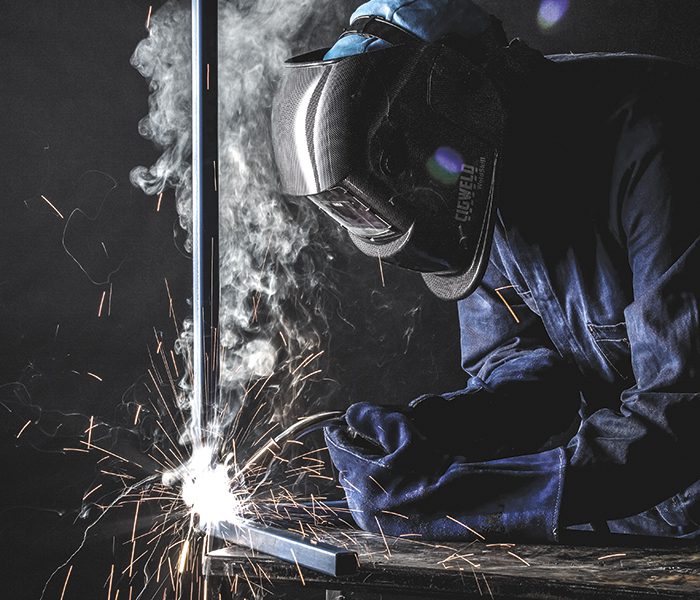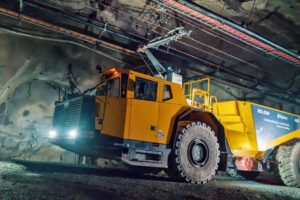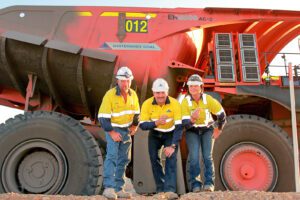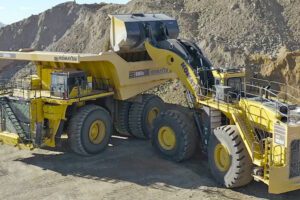The International Agency for Research on Cancer recently reclassified welding fume from Group 2B “possibly carcinogenic to humans” to Group 1 “carcinogenic to humans”. The reclassification came following sufficient evidence that welding fumes cause lung cancer.
After assessing mining operations at a number of NSW sites, the NSW Resources Regulator identified than a number of operators have not identified or acted upon this reclassification and had failed to apply the principles of the hierarchy of controls to manage welding fumes. The inspections also identified that:
- Where respiratory protection in the form of air-stream welding helmets was provided, a higher-order control such as local exhaust ventilation to remove the fumes was not always considered or implemented.
- Where airstream helmets were not always individually issued and were not being used on a regular basis and that workers were not familiar with the care and maintenance and the replacement of filters on these units.
- There was a reliance on natural or fan-forced ventilation to dilute fumes without consideration of other workers in the vicinity.
- Contract maintenance workers appeared to be better informed of the risks associated with welding fumes and were more compliant with the appropriate selection, use and maintenance of personal protection equipment (PPE).
- Operator of underground mines had not considered the implications of contaminating the underground ventilation circuit with welding fumes and exposing other workers in the vicinity.
- Workers were not always provided with adequate information, training and instructions on the carcinogenic risk and appropriate controls for welding processes.
- Occupation hygiene monitoring of workers exposure to welding fumes and ultraviolet radiation was not consistent across the industry.
Recommendations
Following the assessment and subsequent finding, the NSW Resources Regulator has made the following recommendations:
- Welding processes must be subject to risk assessment, and the hierarchy of controls applied to controlling the risks associated with welding fumes.
- Appropriate information and training should be provided to all workers at risk from welding fumes, including contractors.
- Appropriate PPE must be provided to at-risk workers who undertake welding work.
- Mine operators should develop and implement processes to monitor and assess compliance with identified risk controls.
- Occupational hygiene assessment and monitoring programs should be expanded to incorporate worker exposure to welding fumes.
What is PAPR?
This reclassification has also forced many welders and workplaces to rethink their current approach to respiratory protection. For many, the use of powered air respiratory protection (PAPR) has never been more important.
Powered Air Purifying Respirators (PAPR) are a type of personal protective equipment designed for hazardous breathing environments. PAPR systems provide a continuous flow of filtered air and reduces the risk of exposure to harmful contaminants (hazardous articulates, fumes and gases – AKA ‘welding fume’) when welding, cutting or grinding.
When to choose a PAPR
Respiratory contaminants are encountered in different forms, presenting as either particulates or gaseous/vapour hazards. Different filters are required to protect against particles, specific gases or a combination of both.
The use of a PAPR means there is little to no breathing resistance. Unlike standard Air Purifying Respirators, the PAPR creates a fanning effect that keeps the facepiece/ hood/mask from fogging and the wearer more comfortable, reducing worker fatigue when worn in non-Immediately Dangerous to Life and Health environments.
Key benefits of PAPR systems include:
- Positive pressure provided by the fan forces air into the facepiece, hood or helmet, eliminating the difficulty in breathing
- Does not require fit testing if headcover, hoods or helmets are used
- Maybe an option for individuals who have facial hair or are unable to fit N95 respirator models
- Has positive airflow, therefore no breathing resistance
- Provides a higher level of respiratory protection than half (e.g., N95) facepiece, with a wide range of assigned protection factors from 25 to 1000
- Provide a cooled airstream to the user in warm temperatures
Blackwoods Knows Mining Safety
Blackwoods safety specialists are available to provide you the best advice to select the correct personal protective equipment and workwear for your business.
CLICK HERE TO CONTACT A BLACKWOODS SAFETY SPECIALIST

Read more Mining Safety News















Add Comment